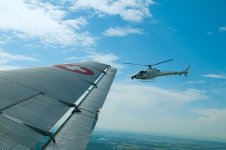FrozenInTime
Well-known
So you've managed to get a window seat that's not mid-wing or blocked by a bulkhead:
What's your ideal carry on lens and body going to be ?
On my past experience, it's got to be small enough to fit into the seat pocket and it has to be mechanical ( to get around the no PEDs on take-off and landing ).
Do you prefer a tight view - collapsible 50mm ; a modest 35/28 wide or to include the window frame - 21/15mm ?
Is a SLR a better choice - so you can see flare, scratches and have no parallax : but bulk makes the in seat pocket option even more difficult.
What's your ideal carry on lens and body going to be ?
On my past experience, it's got to be small enough to fit into the seat pocket and it has to be mechanical ( to get around the no PEDs on take-off and landing ).
Do you prefer a tight view - collapsible 50mm ; a modest 35/28 wide or to include the window frame - 21/15mm ?
Is a SLR a better choice - so you can see flare, scratches and have no parallax : but bulk makes the in seat pocket option even more difficult.







